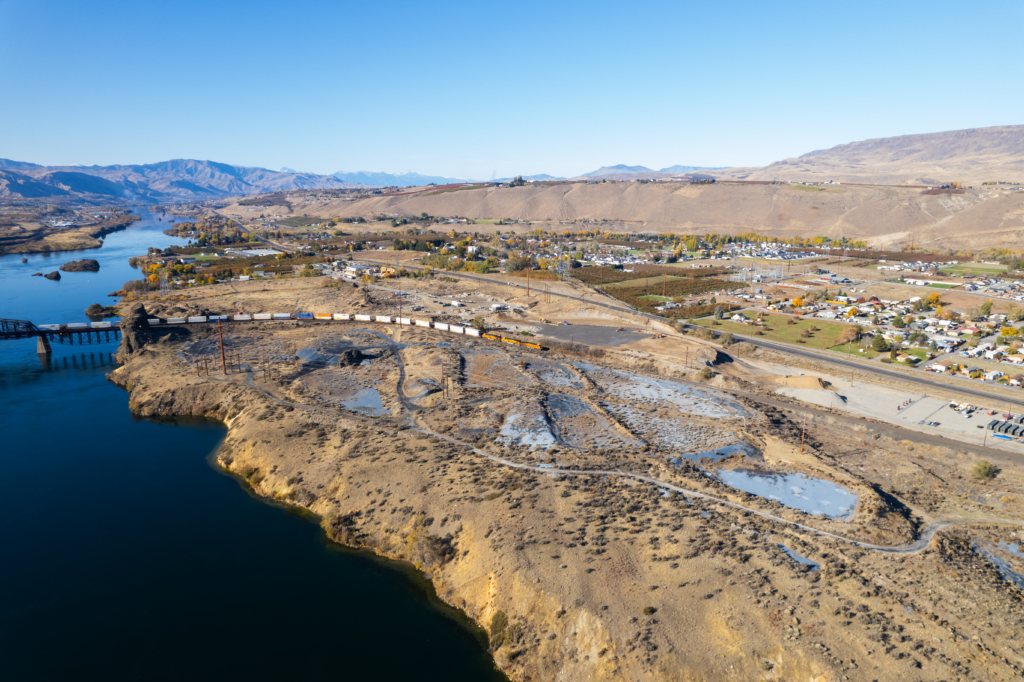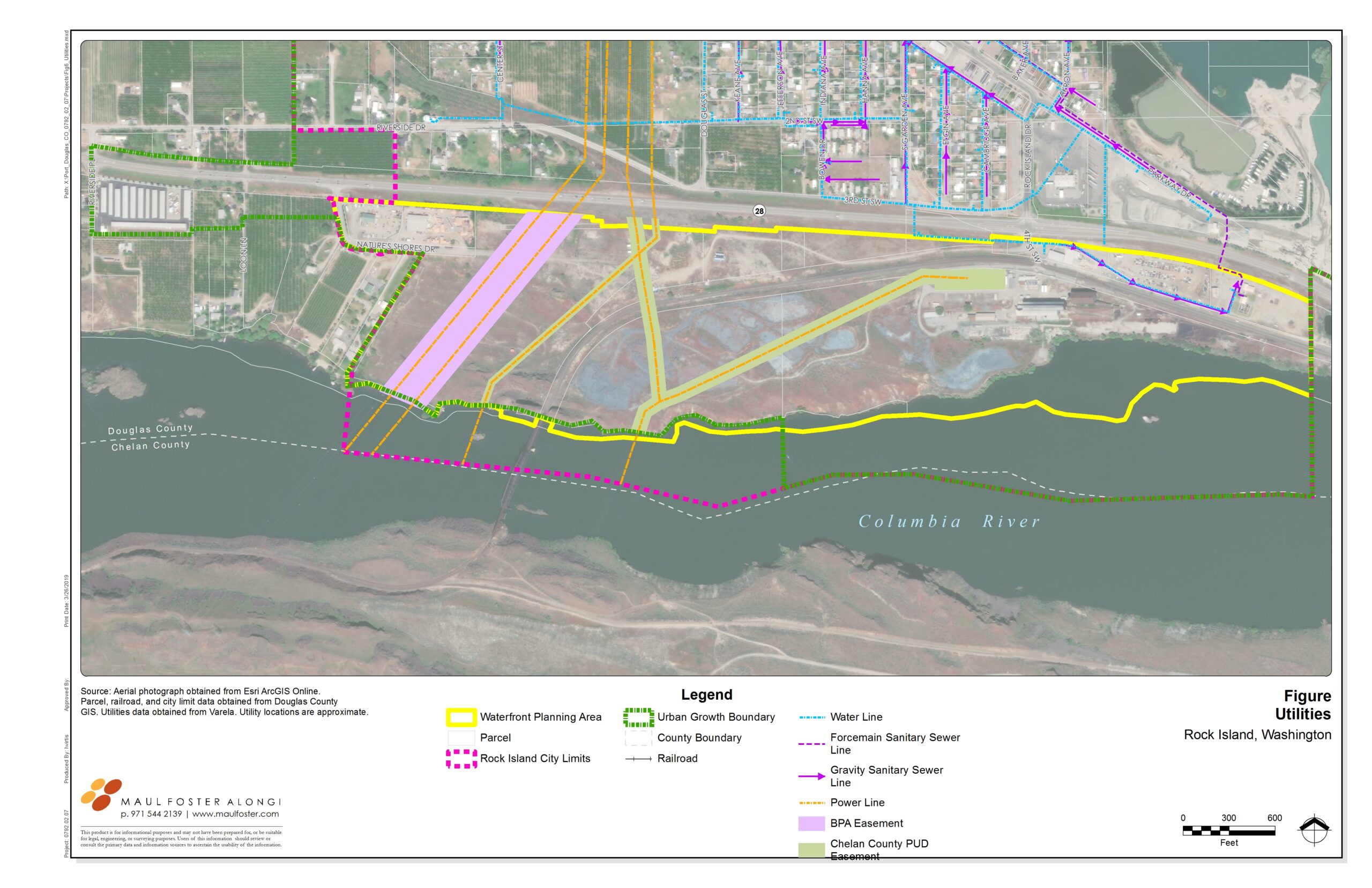Development
There are over 200 acres of developable land, many of which are shovel ready and can host a variety of uses. Whether you start with just a few acres, or over 100, you can grow as much as you want. There are currently only three major land owners that control the Waterfront property. All three are interested in listening to offers or partnership opportunities. The City can connect with the private owners. The property also offers over a mile of low and high bank river frontage and roughly 13 acres of in-water property.
Transportation
BNSF mainline runs through the property and land may support transloading for industrial uses. The rail line can be utilized for infrastructure improvements, building and development, or even as a tourist attraction. The railroad bridge crossing of the Columbia River that lands in the planning area was completed in 1915 and was the first rail crossing of the Columbia River. It is listed on the National Register of Historic Places.

Recreation
The Waterfront property has stunning views of the Columbia River, is adjacent to Highway 28, and is a short drive to outdoor adventure activities. Access to activities include ski areas, 11 golf courses, waterfront recreation, and proximity to multiple trail systems.
Activities accessible from the property include:
- Winter sports at Mission Ridge Ski Resort, snowshoeing at Clara Lake, and snow biking and cross-country skiing at Squilchuck State Park.
- Fishing at Putters Lake, Pit Lake, Hammond Lake, and the Wenatchee Confluence State Park.
- Hiking and trails at Apple Capital Loop Trail, Clara Lake, Sage Hills Trail System, Saddle Rock, and many more!
- Water related activities such as swimming at the Kirby Billingsley Hydro Park, boating at one of the many public ramps, kayaking, and visiting the Rock Island Dam.



Power
Douglas County PUD will service the property and currently has a substation on the property that is fully capable of increasing its capacity. The Bonneville Power Administration and Chelan County PUD also each have distribution lines that cross property.
Regulatory
As part of the Subarea Planning effort in 2019, the City re-zoned the property to support a broad range of industrial, commercial, and residential land uses. The City also adopted Planned Action Ordinance that establishes criteria and procedures that expedite environmental review and identifies required mitigation measures established in the Subarea Plan Final Environmental Impact Statement. With SEPA the process for development addressed, City imposed regulatory barriers to development are significantly reduced.
